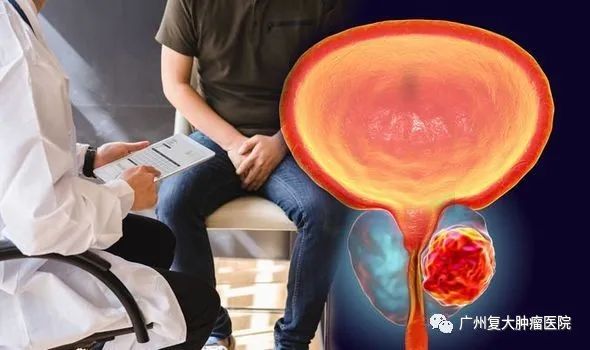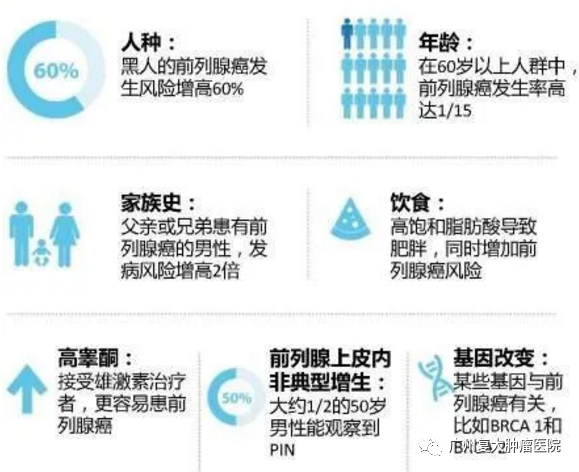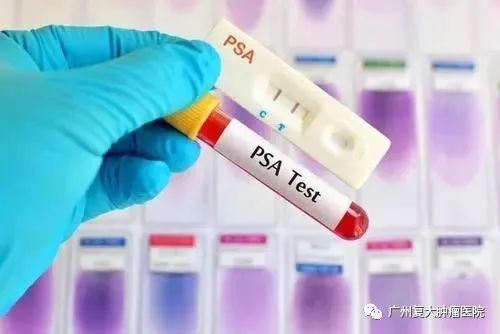Medical statistics show that prostate diseases pose a serious threat to the physical and mental health of men. Among these diseases, prostate cancer is a prostatic epithelial malignant tumor occurring in males. Data shows that the current incidence of prostate cancer is about 9.92 in 100,000 people, mostly in the male population over 50 years old, the older the higher the incidence. The number of prostate cancer patients in China ranks the 6th among male cancer patients over the world. There are nearly 60,000 new cases a year, and the number is increasing as the aging process accelerates.

Experts believe that if prostate cancer can be detected and treated early when the tumor is still confined to the glands without metastases, the five-year survival rate can be more than 99 percent. However, once detected, most prostate cancers are in middle and advanced stages, which not only increase the difficulty of treatment, but also cause a great harm to patients. Therefore, it is necessary to popularize the knowledge about prostate cancer.
Who is at risk?
Men over 45 years old with a family history of prostate cancer
Men over 50 years old
Men over 40 years old with PSA>1μg/L

What are the symptoms?
1. Most of the patients have no obvious uncomfortable symptoms at the early stage, but only find an elevated PSA level or abnormal prostate in the physical examination;
2. When the mass becomes bigger, there will be dysuria, such as increased frequency of nocturia and urgent urination;
3. Oppression and invasion of surrounding organs, such as bladder and rectum, will lead to dysuria, dystocia, perineal pain, hematuria and other symptoms;
4. If lymph node metastasis occurs, edema of lower limbs will be caused;
5. If systemic metastasis occurs in the late stage, bone metastasis may cause pain, pathological fracture, spinal cord compression and other symptoms, and pulmonary metastasis may lead to cough and chest tightness;
6. Advanced cancer patients will also show systemic symptoms, including loss of appetite, poor sleep quality, listlessness and other symptoms. In severe cases, patients will also have progressive anemia.

Differentiate prostatic hyperplasia and prostate cancer
Prostatic hyperplasia is a male senile disease. It is characterized by the proliferation of stromal and epithelial cells and is one of the common causes of lower urinary tract obstruction in elderly men. Because these symptoms are similar to those of prostate cancer at early stage, doctors might be confused during diagnosis. Then how to differentiate prostatic hyperplasia and prostate cancer clinically?

1. Prostate Specific Antigen (PSA) Test
PSA is a protein secreted by prostate duct cells. Both prostatic hyperplasia and prostate cancer may lead to the rise of PSA level, while prostatic hyperplasia may lead to a slight increase of PSA level. If the PSA level exceeds 10ng/ml and FPSA level is elevated, prostate tumor may be suspected and further examination is needed.

2. Digital Rectal Examination (DRE)
In the case of prostatic hyperplasia, an enlarged prostate with smooth surface can be felt by a health care provider during examination. In the case of prostate cancer, a hard nodule or an uneven surface can be felt and patients will feel pain during the examination.

3. Imaging Test
In ultrasound, CT or MRI, the imaging findings of prostatic hyperplasia and prostate cancer are different. For example, hyperplasia shows an enlarged prostate with even or uneven echo, while prostate cancer can be visually distinguished by abnormal hyperechoic and hypoechoic light spots.
4. Biopsy
It can accurately differentiate prostatic hyperplasia from prostate cancer. If you have any of the following symptoms, please receive biopsy:
- Digital rectal examination shows suspicious prostate nodules with any PSA level;
- Suspicious lesions detected by ultrasound or MRI with any PSA level;
-PSA>10ng/ml;
-PSA 4-10ng/ml, suspicious level of f/t (free/total) PSA or PSAD (PSA density)
Common mistakes
1. Tomatoes can prevent prostate cancer?
Lycopene is a powerful antioxidant that can remove free radicals from the body. There are rumors online that lycopene intake may reduce the risk of prostate cancer. In fact, a study that examined the blood levels of lycopene in more than 3,000 men found no clear link between lycopene and prostate cancer.

2. Elevated PSA level indicates prostate cancer?
Not sure. In addition to prostate cancer, prostate inflammation, prostatic hyperplasia or prostate massage can also raise PSA levels, and some patients are even born with high PSA levels. The PSA test helps doctors decide whether to arrange a biopsy to confirm prostate cancer.
3. Androgen will increase the risk of prostate cancer?
Androgen is not associated with prostate cancer. Because testosterone can’t enter the nucleus to stimulate cell growth, it won’t stimulate cancer cell formation. So far, there is no evidence that the testosterone level is associated with prostate cancer.
How to prevent?
- Avoid fatty foods, eat more beans and vegetables, and drink more green tea;
- Keep a balanced diet and avoid eating too much meat, especially pork and beef;
- Quit smoking and limit alcohol consumption;
- Increase outdoor exercise;
- Supplement appropriate amount of selenium and vitamin D and E;
- Early treatment of common prostate diseases, such as prostatitis and prostatic hyperplasia.